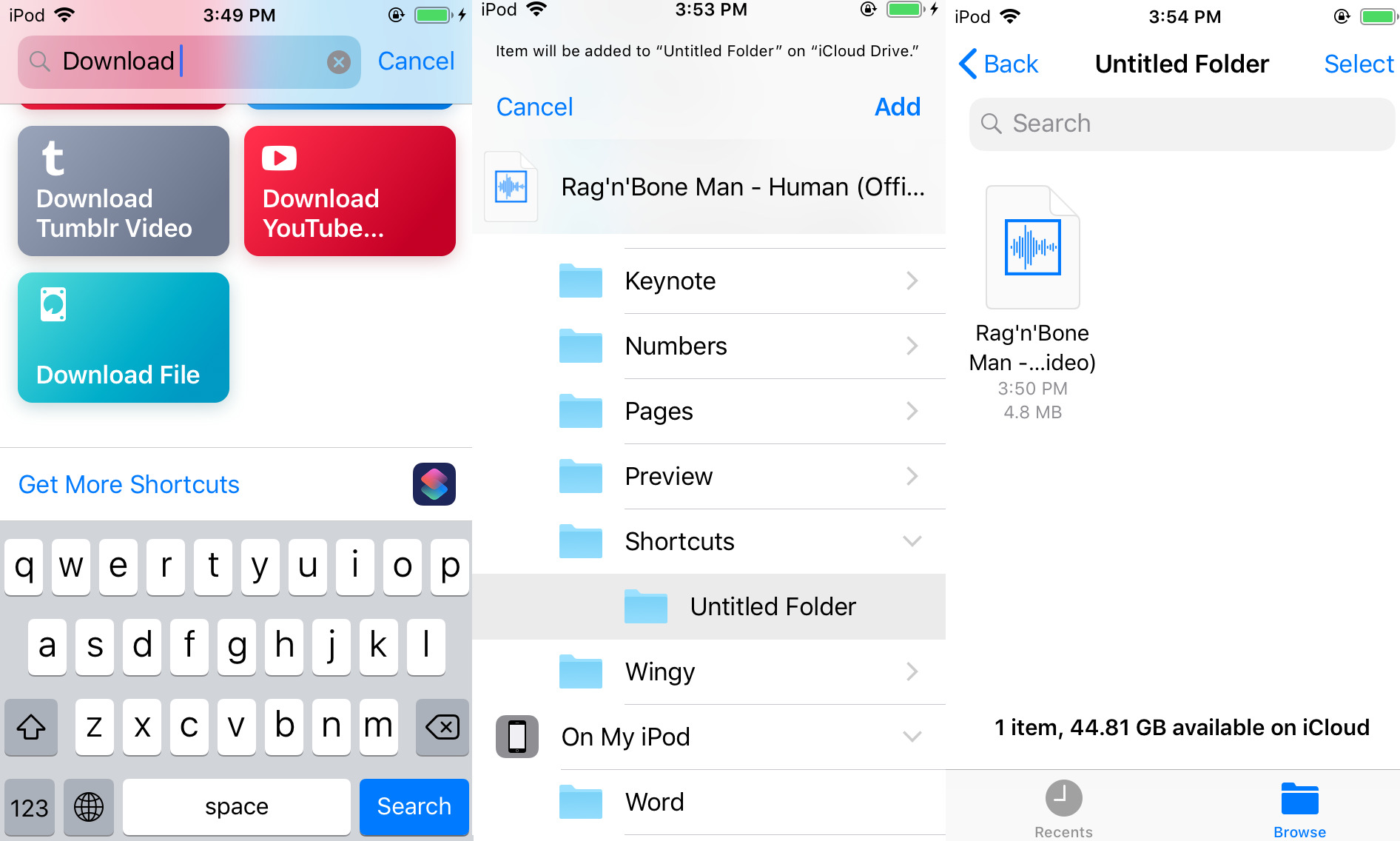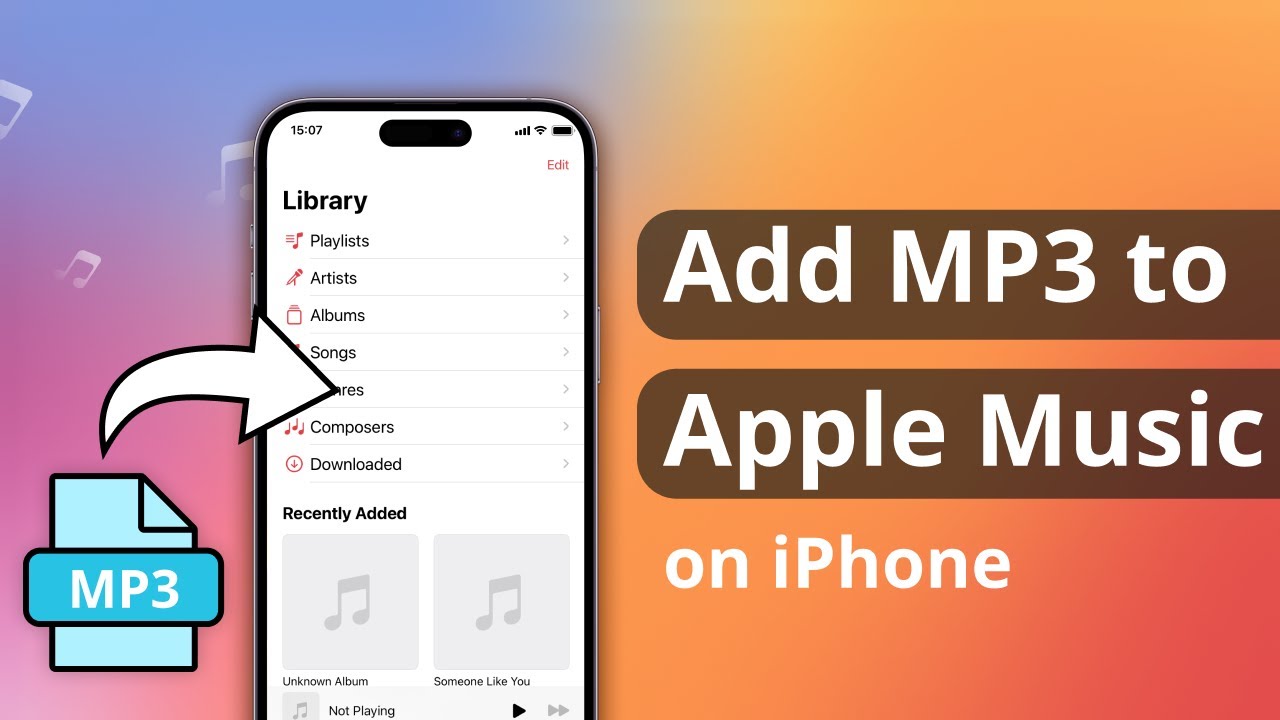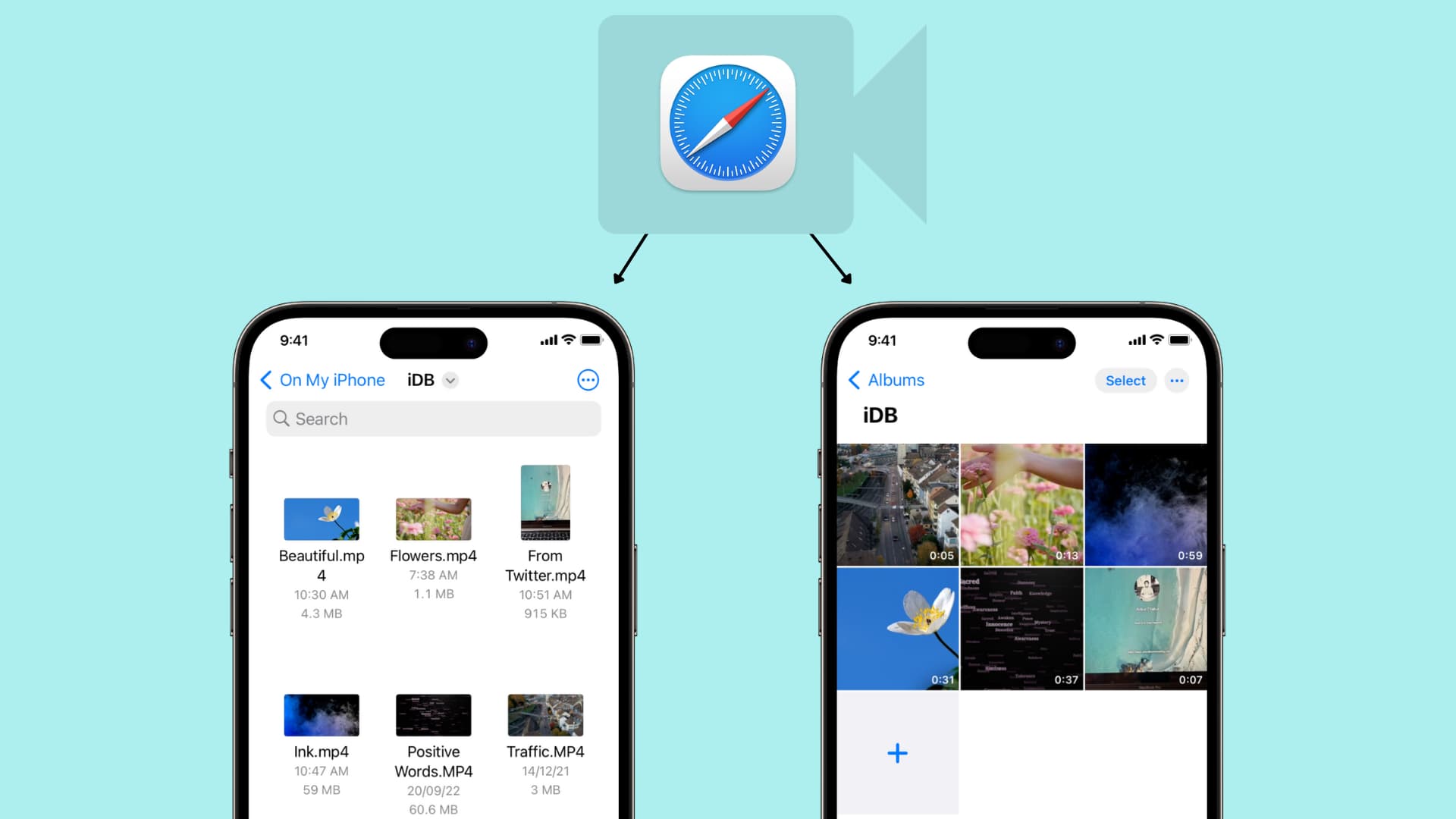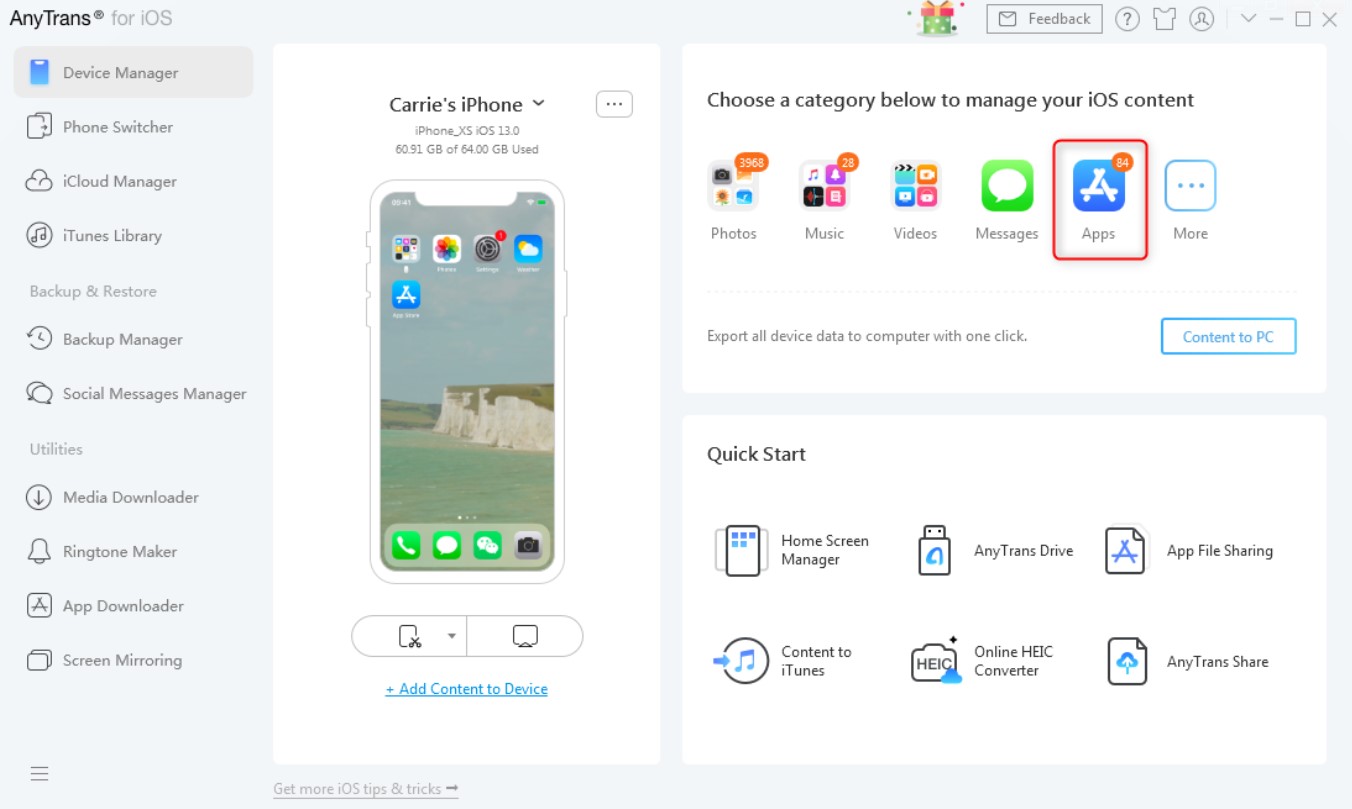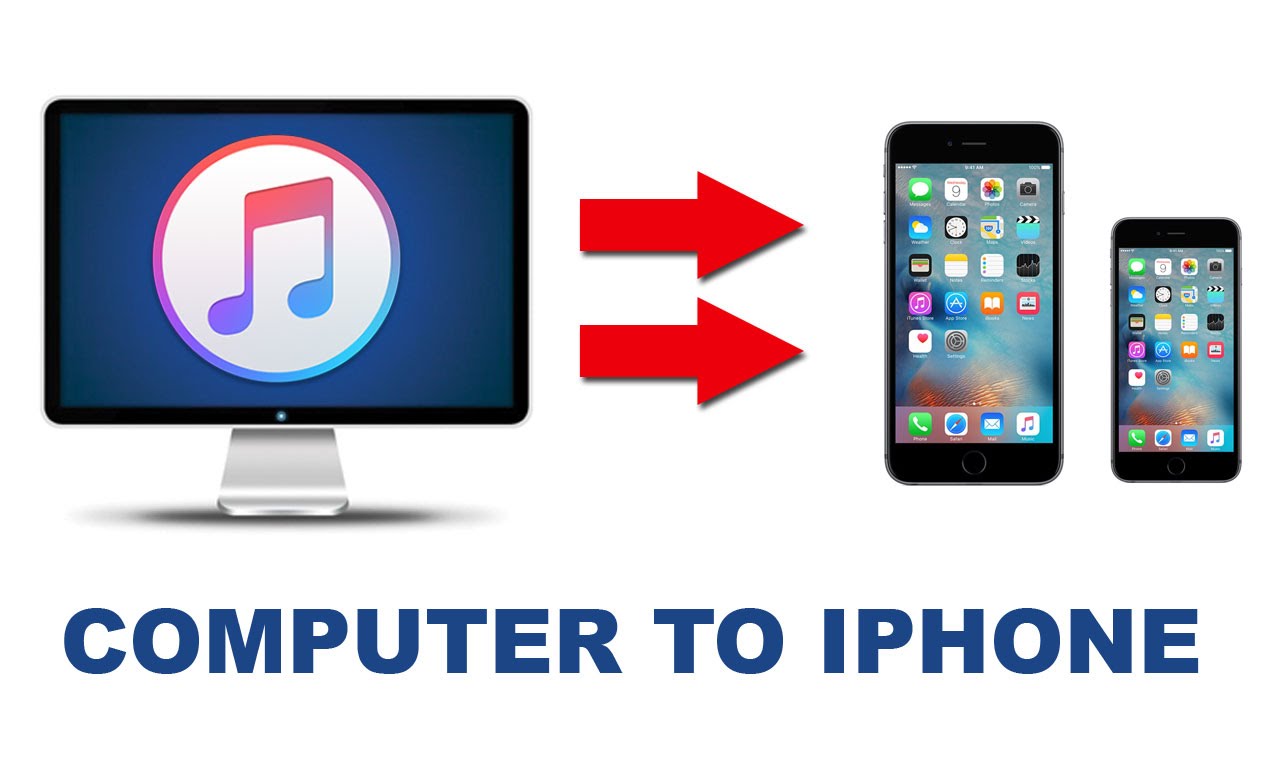Introduction
Downloading files on an iPhone is a common task that many users often need to do. Whether it’s a PDF document, a music track, or a video file, having the ability to easily download and access files on your iPhone can be incredibly useful. While the process may differ slightly depending on the type of file and the website you are downloading from, the overall steps are quite straightforward and can be done with just a few taps.
In this guide, we will walk you through the step-by-step process of downloading a file on your iPhone. We will be using the Safari browser as our example, as it is the default browser on iPhones and provides a seamless downloading experience. So, if you’re ready to learn how to download files on your iPhone, grab your device and let’s get started!
Before we dive into the step-by-step process, it’s important to note that downloading files on your iPhone requires an active internet connection. Make sure you are connected to Wi-Fi or have a stable cellular data connection to ensure a smooth downloading experience.
Now that we’ve got the basics covered, let’s move on to the first step of downloading a file on your iPhone.
Step 1: Open the Safari Browser
The first step in downloading a file on your iPhone is to open the Safari browser. Safari is the default web browser on iPhone devices and provides a user-friendly interface for browsing the internet and downloading files.
To open Safari, locate the Safari icon on your iPhone’s home screen. It is represented by a blue compass-like symbol. Tap on the Safari icon to launch the browser.
Once Safari is open, you will see the browser’s interface with the search bar at the top of the screen and a row of icons at the bottom representing bookmarks, tabs, and more.
If you have a specific website in mind from where you want to download the file, you can enter the website’s URL in the search bar. Alternatively, you can use a search engine to find the website by entering relevant keywords in the search bar.
Once you have entered the website’s URL or conducted a search, tap the “Go” button on the keyboard to navigate to the website.
If you have previously visited the website or added it to your bookmarks, you can access it by tapping on the “Bookmarks” icon at the bottom of the screen and selecting the website from your bookmarked list.
Opening the Safari browser is the first step towards downloading files on your iPhone. In the next step, we will learn how to find the specific file you want to download.
Step 2: Find the File You Want to Download
After opening the Safari browser on your iPhone, the next step is to find the specific file that you want to download. This could be a document, an image, a video, or any other type of file.
If you already have a specific website in mind where the file is located, you can enter the website’s URL in the search bar at the top of the Safari browser and navigate to the site.
Once you’re on the website, you may need to browse through different pages or sections to locate the file. Look for links or buttons that indicate downloads, such as “Download,” “Get,” or file-specific icons like a cloud or arrow pointing downwards.
If you’re not sure where to find the file, you can use the website’s search function, usually denoted by a magnifying glass icon or the word “Search.” Enter relevant keywords related to the file you’re looking for, and the website will display relevant results.
Additionally, some websites have categories or filters that allow you to refine your search. These can help you narrow down your options and find the file more quickly.
If you’re looking to download a file from a search engine result, navigate to the search engine first by entering the search engine’s URL or conducting a search directly in the Safari browser’s search bar. Once you see the search results, click on the link that corresponds to the website or web page where the file is located.
Remember to be cautious when downloading files from unfamiliar websites and only download files from trusted sources to ensure the file’s authenticity and preserve the security of your device.
Once you have found the file you want to download, it’s time to move on to the next step, where we will learn how to start the download process.
Step 3: Tap on the Download Link
Once you have located the file you want to download on your iPhone, the next step is to tap on the download link to initiate the downloading process. The download link is typically represented as a clickable text or button that indicates the file’s download option.
When you tap on the download link, Safari will take action and start the download process. You may see a loading icon or progress bar indicating that the file is being downloaded.
It’s important to note that the appearance and location of the download link may vary depending on the website or webpage you are accessing. In some cases, the download link may be directly accessible on the page, while in others, you may need to go through additional steps or prompts.
Sometimes, you may encounter websites that use pop-up advertisements or deceptive buttons that mimic download links. Be cautious and make sure to distinguish the legitimate download link from such misleading elements. Verify the source and credibility of the website before proceeding with the download.
If the download link doesn’t respond or nothing happens when you tap on it, try long-pressing (pressing and holding) the download link instead. This action will bring up a menu of options, including the option to download the file. Select the “Download Linked File” or similar option to initiate the download.
Once you have successfully tapped on the download link, the file will start downloading to your iPhone. The next step will guide you on choosing a download destination for the file.
Step 4: Choose a Download Destination
After tapping on the download link and initiating the download process, the next step is to choose a destination for the downloaded file on your iPhone. Safari gives you the flexibility to select where you want the file to be stored on your device.
When the download begins, a pop-up or prompt will appear on the screen, asking you to choose a download destination. The prompt may provide options such as “Save File To…” or “Open In…”.
If you want to save the file directly to your iPhone’s default download location, which is the Downloads folder, you can simply tap on the “Save File” or “Save” option.
Alternatively, if you want to store the downloaded file in a specific folder or directory, you can select the “Choose…” or “Save To…” option. This will allow you to navigate through your iPhone’s file system and select the desired folder where you want the file to be saved.
Keep in mind that the options presented may vary depending on the website or webpage you are downloading from. Some websites may provide limited saving options, while others may give you more flexibility.
If you have a file manager app installed on your iPhone, such as Files or Documents by Readdle, you may be able to select that app as the download destination. This option can be useful if you prefer organizing and managing your files within a dedicated app.
Once you have chosen the download destination, the file will continue to download and save to the designated location on your iPhone. The next step will cover monitoring the download progress.
Step 5: Monitor the Download Progress
Once you have selected the download destination for your file, it’s important to monitor the download progress to ensure a successful and timely completion. Fortunately, Safari provides an easy way to keep track of the download progress on your iPhone.
After initiating the download, you will see a progress bar or loading icon indicating the download status. The progress bar usually appears at the top of the Safari browser, near the address bar or in the Downloads section.
As the file downloads, the progress bar will fill up gradually, giving you a visual representation of the download completion. The more the progress bar fills up, the closer the file is to being fully downloaded.
In addition to the progress bar, Safari may also display the estimated time remaining for the download to finish. This can be helpful in gauging how much longer you need to wait before the file is completely downloaded.
It’s important to note that the download speed can vary depending on your internet connection. If you have a stable and fast internet connection, the file may download quickly. However, if you have a slower connection, the download process may take more time.
While the file is downloading, it’s advisable to refrain from closing the Safari browser or navigating away from the page. Doing so may interrupt the download process and result in an incomplete file.
Once the progress bar reaches 100% and the download is complete, you will be able to access the downloaded file on your iPhone. The next step will guide you through accessing the downloaded file.
Step 6: Access the Downloaded File
After the file has finished downloading, the final step is to access the downloaded file on your iPhone. Safari allows you to easily locate and open the downloaded file, depending on the file type and the download destination you have chosen.
To access the downloaded file, tap on the file name or the notification that appears at the bottom or top of the Safari browser window. This will open the file using the default app associated with its file type.
For example, if you have downloaded a PDF document, Safari will open it using the built-in PDF viewer on your iPhone. Similarly, if the downloaded file is an image, it will be opened in the Photos app, and if it is a video, it will be opened in the Videos or TV app.
If you have chosen a specific download destination or saved the file in a folder, you can access the file by navigating to the respective app or file manager on your iPhone. Look for the folder or directory where you saved the file, and tap on it to view its contents.
If you have a file manager app installed, such as the Files or Documents app, you can use the app to browse through the various folders and locate the downloaded file.
Once you have accessed the downloaded file, you can view, edit, share, or perform any other actions based on the capabilities of the associated app and the file type.
It’s worth mentioning that downloaded files will remain stored on your iPhone unless you delete them manually. It’s a good practice to periodically review and clean up your downloads folder or other storage areas to free up space on your device.
With that, you have successfully completed all the steps involved in downloading and accessing a file on your iPhone using the Safari browser. Whether it’s a document, image, music track, or video, you now have the skills to effortlessly download files and access them on your iPhone.
Conclusion
Downloading files on your iPhone can be a straightforward process when using the Safari browser. By following the step-by-step guide outlined in this article, you can easily download and access various types of files, from documents to images and videos.
Remember to always ensure a stable internet connection before initiating the download. Be cautious and download files only from trusted sources to protect your device’s security.
Using Safari, you can open the browser, navigate to the desired website, find the file you want to download, tap on the download link, choose a download destination, monitor the download progress, and finally, access the downloaded file.
With a few simple taps, you can have your desired files readily available on your iPhone, allowing you to view, edit, share, or enjoy them as needed.
Keep in mind that some websites or file types may have specific requirements or additional steps to download files. However, the general process outlined in this guide will serve as a solid foundation for your downloading needs.
Now that you have the knowledge and steps to successfully download files on your iPhone, you can take advantage of the file-sharing capabilities of your device and enhance your productivity and entertainment experiences.
So, go ahead and explore the vast world of files you can download on your iPhone, and enjoy the convenience and flexibility it offers!







